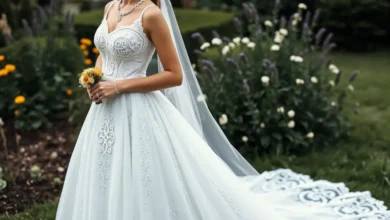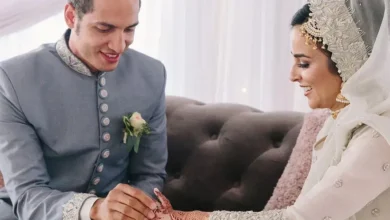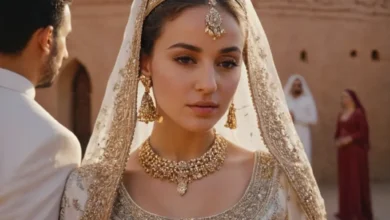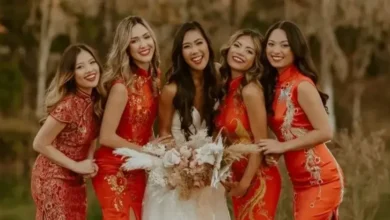In the vast savannas of Kenya and Tanzania, the Maasai people have preserved their cultural identity for centuries through vibrant rituals, storytelling, and artistry. Among their most captivating traditions are Maasai weddings celebrations steeped in symbolism, community, and a visual language conveyed through bold red hues and intricate beadwork.
These elements are far more than decorative; they are codes that communicate identity, values, and ancestral wisdom. Let’s unravel the secrets behind the crimson-drenched ceremonies and the beadwork that tells a thousand stories.
The Heartbeat of Maasai Culture: Why Weddings Matter
For the Maasai, a semi-nomadic pastoralist community, marriage is not just a union of two individuals but a bond between families, clans, and generations. Weddings reinforce social cohesion, ensure the continuity of traditions, and celebrate the transition to new stages of life. Every ritual, song, and garment is imbued with meaning, reflecting the community’s deep connection to the land, livestock, and ancestors.
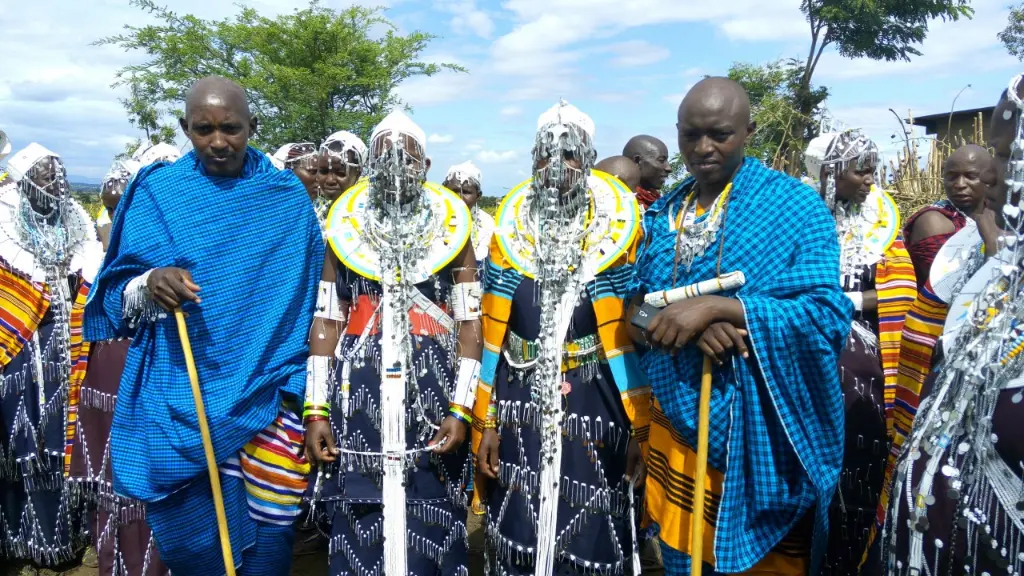
The Power of Red: More Than a Color
In Maasai weddings, red dominates the visual landscape—from the bride’s attire to the warriors’ shields. But why red?
See also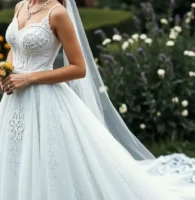 Celtic Wedding Gowns: A Guide to Timeless Elegance
Celtic Wedding Gowns: A Guide to Timeless Elegance
Symbolism of Red
- Bravery and Unity: Red (osukuroi in Maa) symbolizes the blood of the cow, the lifeblood of the Maasai. It represents courage, strength, and the communal bonds that sustain the tribe.
- Protection: Red is believed to ward off evil spirits and danger, ensuring the couple’s safety and prosperity.
- Fertility and Vitality: The color echoes the earth’s richness and the promise of new life, essential for a pastoralist community reliant on thriving herds and families.
Red in Practice
- Bride’s Attire: The bride wears a red shuka (traditional cloth) draped over her shoulders, paired with a red beaded collar (enkarewa).
- Warrior Guardians: Male relatives, adorned in red-dyed garments and ochre-painted hair, perform the adumu (jumping dance), symbolizing agility and readiness to protect the community.
Beads: The Silent Language of Identity
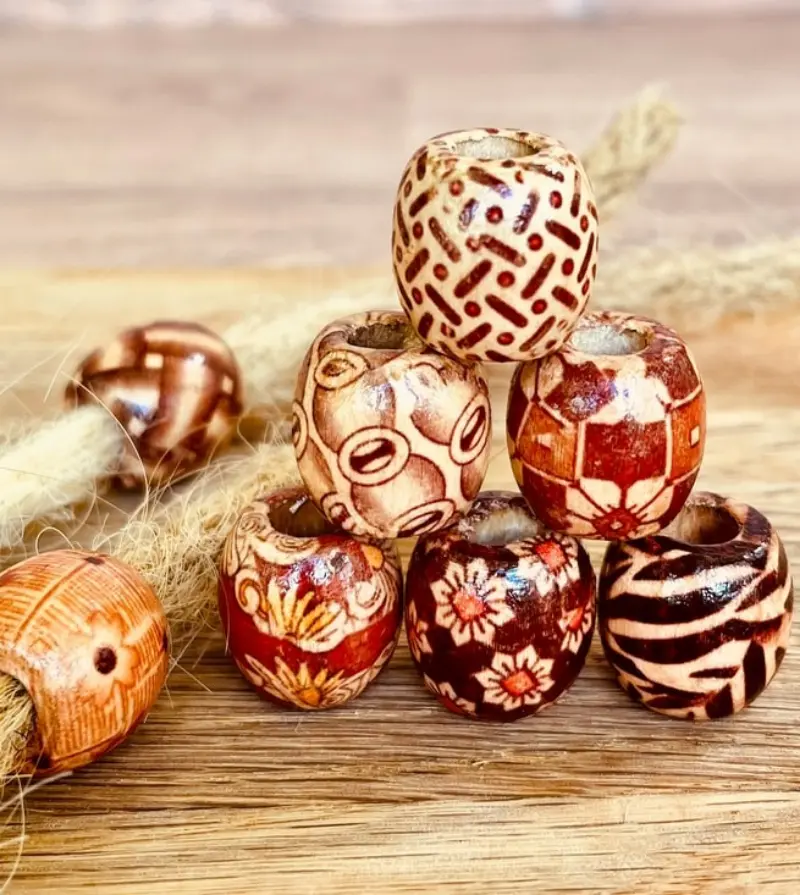
Maasai beadwork is a lexicon of its own, with patterns, colors, and designs encoding messages about age, marital status, and social role. Crafted by women, these beads are a testament to skill, patience, and cultural pride.
The Art of Beadwork
- Materials: Traditionally, beads were made from clay, wood, and copper. Today, glass beads traded from Europe and Asia are used, but the symbolism remains intact.
- Craftsmanship: Beading is a communal activity, with elder women teaching younger generations the patterns and meanings.
Decoding the Colors
Each bead color carries specific significance:
- Red: Love, bravery, and unity.
- Blue: Energy and the sky, representing God’s blessing.
- Green: Health and the land, symbolizing sustenance from cattle and crops.
- White: Purity, peace, and milk, a staple of the Maasai diet.
- Yellow/Orange: Hospitality and warmth, reflecting the sun’s vitality.
Beaded Narratives in Weddings
- Bride’s Necklace (Enkarewa): A dense, multi-layered collar signifies her transition to womanhood. The design often includes triangular patterns symbolizing fertility.
- Warrior’s Armbands: Beaded armbands worn by the groom’s age-set (warrior group) denote their role as protectors.
- Exchange of Gifts: Beaded jewelry is exchanged between families to formalize the union, with specific patterns indicating clan affiliations.
Rituals of Union: From Negotiation to Celebration
A Maasai wedding unfolds in stages, each marked by beadwork, song, and symbolic acts.
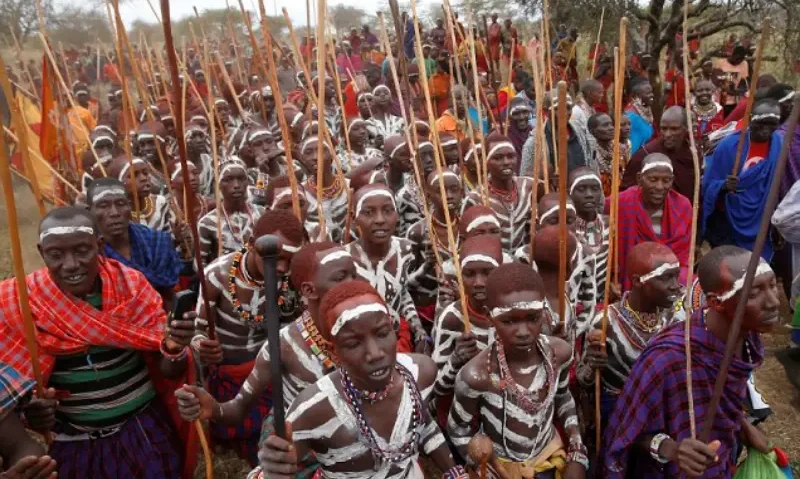
1. The Proposal (Enkipata)
Marriages are often arranged, with negotiations led by male elders. The groom’s family presents beaded staffs and livestock (usually cows) as a dowry. The number of cows offered reflects the bride’s value and the families’ status.
See also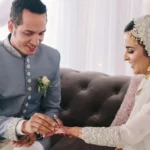 Arab Weddings: The Mystique of Cultural Splendor
Arab Weddings: The Mystique of Cultural Splendor
2. The Bride’s Preparation
Before the wedding, the bride is secluded with female relatives, who adorn her in beadwork and share wisdom about marriage. Her hair is styled with red ochre and animal fat, a sign of beauty and maturity.
3. The Ceremony (Eudoto)
- Procession: The bride walks to her new home, escorted by warriors singing olpul songs that praise her virtues.
- Blessings: Elders anoint the couple with milk and honey, invoking ancestral blessings.
- Feast: The community shares roasted meat and fermented honey beer (muratina), celebrating the union.
4. The Final Ritual (Enkishon)
The bride’s mother gifts her a beaded fertility necklace, ensuring she bears healthy children. The couple is then welcomed into their new homestead, marked by a red-painted door.
Modern Challenges: Preserving Tradition in a Changing World
Globalization, climate change, and shifting lifestyles threaten Maasai traditions. Yet, communities are finding innovative ways to adapt:
- Beadwork Cooperatives: Women’s groups like Sidai Designs in Kenya sell beadwork globally, preserving skills and generating income.
- Cultural Tourism: Weddings are sometimes opened to outsiders, offering education and fostering cross-cultural respect.
- Youth Initiatives: Young Maasai are blending beadwork with contemporary fashion, ensuring relevance for new generations.
Conclusion: A Tapestry of Resilience
In the Maasai wedding, red and beads are more than aesthetics—they are a living archive of history, values, and hope. Each crimson garment and beaded pattern whispers stories of courage, love, and the unbroken thread connecting past and future. As the Maasai say: “Ildoriti enkishui” (“The beads never lie”).
In the words of a Maasai elder: “Our weddings are not just for us. They are a prayer for the land, the cattle, and the children yet to come.”
By honoring the secret language of red and beads, the Maasai remind the world that tradition is not static—it is a dance between memory and innovation, a beacon of identity in an ever-changing world.
